THE CARE FACTOR
Mealtimes in residential care facilities should embody a sense of companionship and autonomy of choice for residents.


AGILE SUPPLY CHAIN PLANT-BASED MENUS KITCHEN LOGISTICS WHAT TO LOOK FOR IN A TENDER

THE CARE FACTOR
Mealtimes in residential care facilities should embody a sense of companionship and autonomy of choice for residents.


AGILE SUPPLY CHAIN PLANT-BASED MENUS KITCHEN LOGISTICS WHAT TO LOOK FOR IN A TENDER
From a childhood steeped in culinary delights to evolving dining experiences for residents at Regis Aged Care, challenge and invention are what drives Process and Product Innovator Bryan Seeborun.

While the hype of the Olympics builds, we’ll soon be focused on Paris, while other regions of the world suffer terribly from actions beyond their control. It’s a reminder to live each day as best we can, and with decency.
In this edition of Flair, we look into the requirements for welcoming pets into work spaces and eateries (pg 24), while winter reminds us what’s needed to keep workplaces infection-free (pg 28).
As plant-based dining becomes more popular, restaurants evolve menus to stand out (pg 22), and Katermaster’s new Regen container makes kitchen-to-dishwasher issues a thing of the past (pg 7).
As we move through a more sustainably-minded world, there are ways we can have a positive impact (pg 4), and for businesses, steering clear of ‘green-claiming’ is vital to gain customer trust (pg 5).
When your business comes to tender, exactly what should you be looking for to get the best from your suppliers? (pg 18) Once again, we are seeing global influences impacting the supply chain – how are your suppliers navigating this for your business? (pg 16)
We speak to our feature guest, Bryan Seeborun from Regis Aged Care about his fascinating career (pg 30), and he sheds some light in our main article on ensuring residents in care facilities are served appealing and nutritious meals, leading to greater resident wellbeing (pg 8).
I hope you enjoy this issue.
Lance Ward Managing Director, Bunzl Australia & New Zealand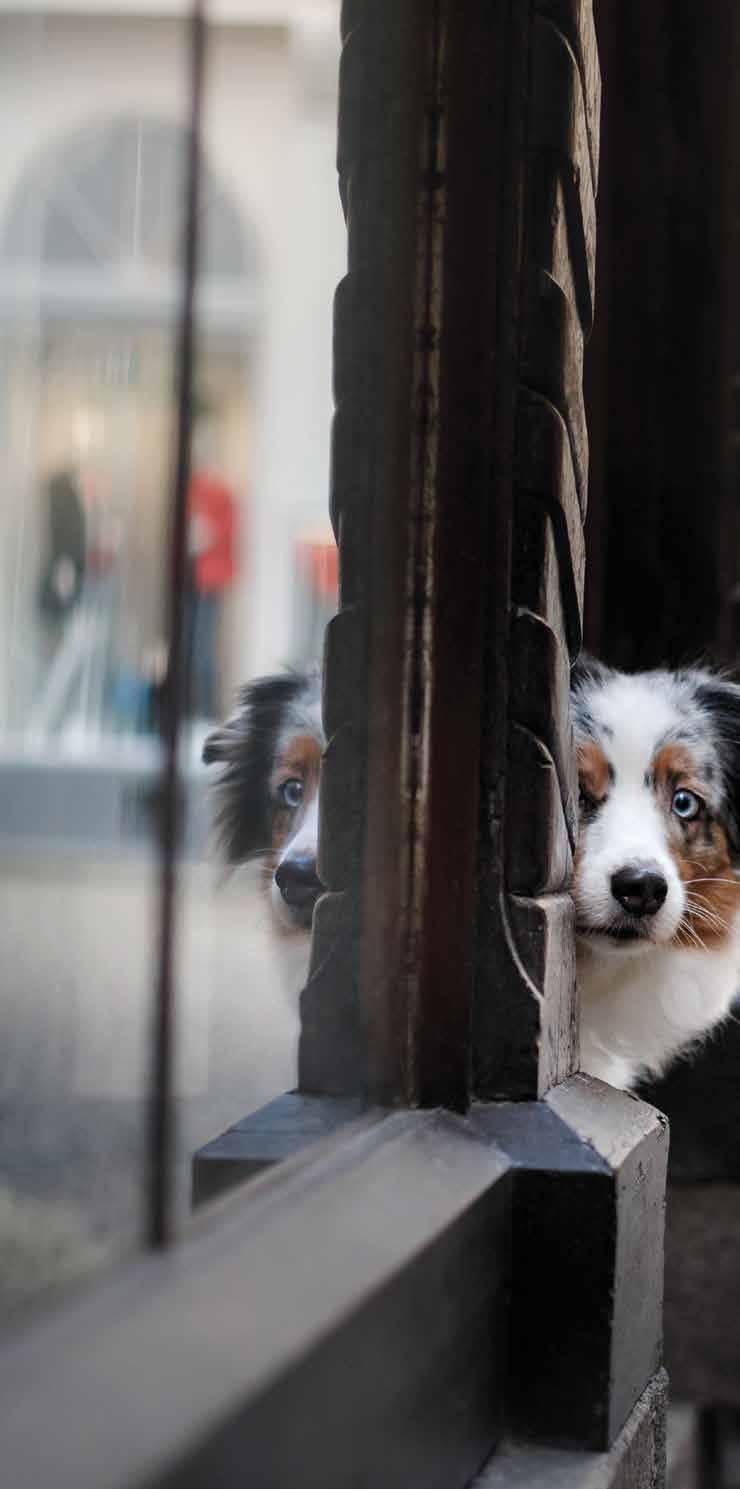
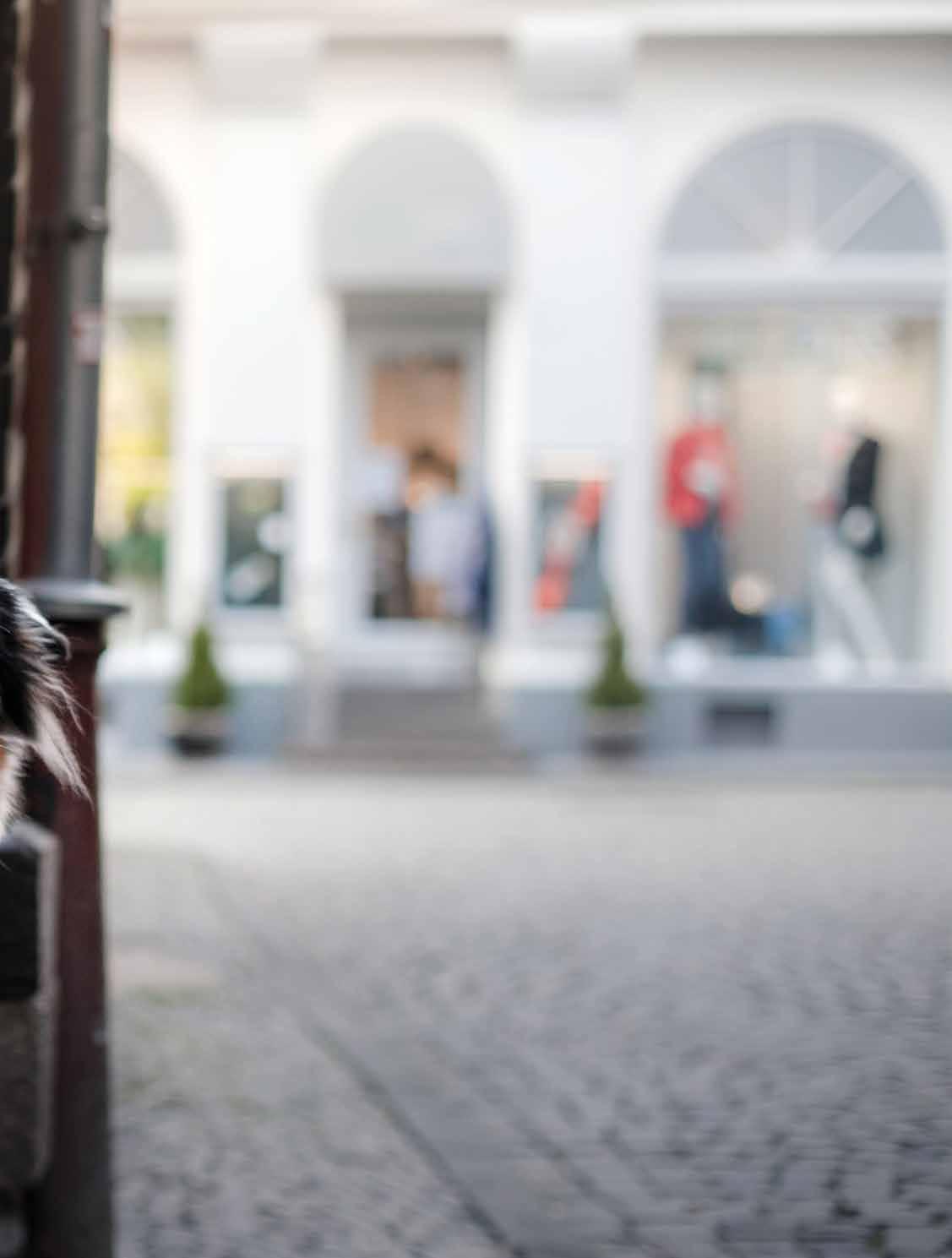
As well as nutritional considerations, mealtimes in residential care facilities should centre around joy, respect and communal dining.
12 Sort Your Set-Up
Workflow logistics to employ that ensure a safe and functional commercial kitchen space.
16 Keep It Flexible
Why it’s key for businesses to have a flexible supply chain to counter an unsteady market.
18 Strategy For Success
Beyond price, there are other crucial aspects for a company to evaluate before signing a tender.
22 From Plant to Plate
Offering plant-based meals can help eateries elevate their menus.
24 Pet Friendly
There’s joy in making a working or dining space pet-friendly – there’s also things to consider to keep places hygienic and people safe.
28 Winter Workplace
With the cooler months comes not-so-cool viruses. Here’s how to ensure a clean workplace in winter.
30
From family culinary traditions to a role as Process and Product Innovator; combining food, care and innovation drives Regis Aged Care’s Bryan Seeborun.
31 Expert Q&A
With Bunzl’s Jason Williamson.
Cover Photography: Francesco Vicenzi

By swapping out one type of glove for another, ahs hospitality has significantly reduced waste and increased its ESG standing.
conscious world, strategic sourcing can carry weight far beyond the bottom line.
For housekeeping service providers ahs hospitality, ESG is not just a strategy; it’s a non-negotiable. The company recently partnered with Bunzl to streamline operations and source a more sustainable disposable glove. By switching to lightweight nitrile gloves, they managed to reduce the business’s waste to landfill by a whopping 56% – equalling an estimated 5400-kilo reduction.
“Our initial strategy was to look at how we can report on our emissions based on stock deliveries. From there, our focus became how to transition products as they come to market,” explains Justin Jones, General
Manager of Sales & Marketing at ahs hospitality. “With gloves being the most utilised product of our cleaning ranges, it was a no-brainer to find a more sustainable solution.”
The impact of the swap was farreaching: as well as the sustainable benefits, there’s ease of access through online ordering and the ability to consolidate to one product across over 120 sites.
“It’s also been noted that these gloves are far more durable than some of the previous brands we’ve used, tried and tested – which again feeds into the ability to avoid unnecessary consumption and additional waste,” adds Jones.
So, how difficult was the big swap to implement? “Internally, we had
subject matter specialists outline everything from cost implications to the operational impact of the boxes; even through to testing how the material is affected by the chemicals we use across our sites,” says Jones.
“We also worked with Bunzl Account Managers on the consolidation of product and loading for purchase through the e-store.”
In 16 weeks from review to implementation, ahs hospitality had the new gloves in the hands of every team member. A win for both the environment and the bottom line.
For businesses to accurately communicate their commitment to sustainability, they must carefully assess the environmental and sustainability claims they’re making.
UNDERSTANDING THE CONCEPT of ‘green claiming’ – making environmental or sustainability claims about products or practices, often for marketing purposes – is essential for businesses looking to effectively communicate their commitment to sustainability.
Environmental claims can be a powerful marketing tool. But those trying to tap into a growing consumer desire for sustainable products and practices are having to walk the delicate tightrope between shining a welldeserved spotlight on their businesses’ great work, and accidentally misleading customers on the environmental benefits of their products and practices. Not only does making credible claims reflect good business practice, but it’s also a legal requirement under Australian Consumer Law which published its updated guidance document in December 2023.
When it comes to sustainability-related claims on products, authenticity and clarity can cut through the noise and speak volumes to customers. Today’s consumers often prioritise sustainability in purchases, relying on claims made to support their decisions. Therefore, it is
important to pay attention to the transparency and specificity of any sustainability claims being made.
Any labelling on products should provide clear and specific information about the environmental or sustainability benefits of the product or service. Vague or unsubstantiated claims such as “green” or “eco-friendly” can mislead customers and lead to breaching Australian consumer law.
To support genuine environmental and sustainability benefits, numerous certification bodies such as the Energy Star Rating, Fair Trade and Forest Stewardship Council® (FSC®) have been established to verify best practices and lend their logos to products that have been assessed and certified. Customers are increasingly relying on these certification bodies to inform their purchasing decisions.
It is also important to consider the entire lifecycle of the product or service, from sourcing and manufacturing to distribution and disposal. Industry-leading products and services should aim to minimise environmental impact at every stage.

Minimising the chances of cross-contamination in the kitchen across the flow of production keeps everyone safe.
HARMFUL bacteria can cause food poisoning and damage the reputation of catering businesses and commercial kitchens. Effectively minimising risk works across the entire production flow: starting from when the product is received right through to transportation to its final destination. Each step of the process requires respective operations and protocols to keep food products safe and hygienic.
At the arrival stage, if food is delivered in cardboard boxes, throw boxes in the recycling bin and any spoiled products into organic waste bins. Organisms can hitch a ride to the storeroom via corrugations in the packaging.



Place the food in clean storage boxes with tightfitting lids in the storeroom, and perishables in the coolroom within 15 minutes of delivery. In the coolroom, make sure cooked and raw foods are separated and labelled with the date and food type. Use food on a FIFO (first in, first out) basis to keep ingredients fresh.
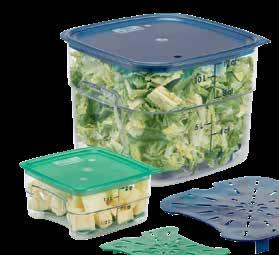
The temperature danger zone for bacterial growth in food is between 5°C and 60°C. That’s why thawing food at room temperature is risky. The quicker food is heated or chilled, the safer. Cross-contamination can be prevented by using colour-coded chopping boards and utensils. Clean and sanitise equipment regularly and always wash hands before handling food. Factor in a regular shelf clean to your weekly schedule.


When serving food, make sure it stays out of the danger zone by using a bain-marie or ice. Caterers can avoid the danger zone by using insulated food carriers. Safe commercial kitchens have ways to minimise hazards at every step. These steps are documented in Hazard Analysis and Critical Control Point (HACCP) records.
Katermaster’s latest Regen takeaway container has been designed and manufactured to enable it to be used countless times for the safe and easy packaging and transport of food.
IN THE BUSTLING world of commercial catering, efficiency is paramount. Yet, finding the right kitchenware, like food containers, that balance durability, functionality, and sustainability can be a challenge.
Many reusable containers on the market are tailored for household kitchens, falling short in the busy environment of commercial settings. Katermaster has addressed this gap with its latest innovation: the Regen polypropylene container.
Crafted specifically for commercial caterers, the Regen container boasts features designed to meet the demands of professional kitchens. Its construction prioritises durability without compromising on material efficiency. With optimised wall strength, the Regen is robust enough to withstand daily use without succumbing to cracks or breaks.
The containers are designed for leak resistance, thanks to the embedded seal in the lid. This not only ensures the safe handling of hot foods but also minimises food loss, all achieved without resorting to composite materials for sealing. Transport efficiency is also a key consideration, with the Regen container offering excellent nest-ability, facilitating easy storage and transportation, and optimising space utilisation.
In keeping with the principles of sustainability, the containers are crafted from clear plastic mono polymer (polypropylene), making them able to be readily recycled at the end of its lifecycle.
Recognising the importance of responsible waste management, Katermaster has designed these containers to be recyclable Australia-wide through the kerbside recycling system, and they proudly bear the Australasian Recycling Logo (ARL), approved by the Australian Packaging Covenant Organisation (APCO).
In the development of the Regen container, attention was paid to hygiene and ease of cleaning. Unlike containers with potential food traps like hinged lids or silicone seals, the Regen eliminates such concerns, ensuring a thorough clean with every use.
With its blend of durability and functionality, the Regen container stands as a testament to Katermaster’s commitment to innovation in the commercial catering industry.
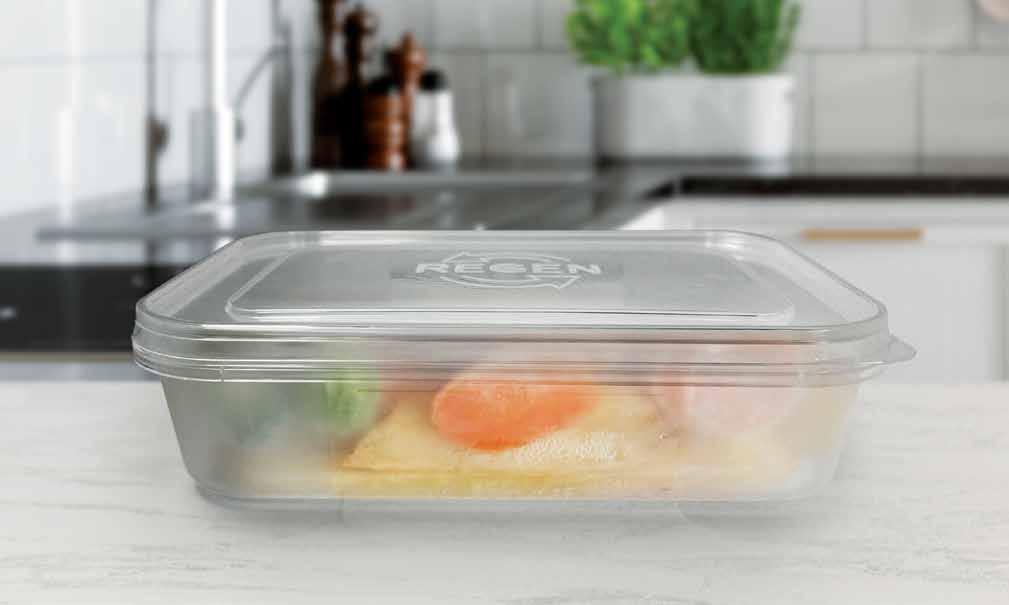

MEALTIMES IN RESIDENTIAL CARE SHOULD BE A TIME TO FOSTER AUTONOMY AND JOY AND OFFER RESIDENTS THE DIGNITY OF CHOICE, CONNECTION AND PLEASURE.

Mealtimes are not only about sustenance and nutrition, but also opportunities for companionship and social interaction. They become rituals providing the comfort of the familiar or the delight of new flavours or friends at the table.
In a residential care environment, mealtimes must offer the nutritional benefits associated with good health along with the sense of connection and ability
to make choices we associate with dining. In this way, the dignity we take for granted around what, how and with whom we eat is nurtured for those made more vulnerable by age, illness or disability.
The importance of food to the wellbeing of residents was highlighted in the 2018 Royal Commission into Aged Care Quality and Safety as an area in need of immediate improvement, with poor nutrition linked to increased incidence of falls and fractures, and increased risk of infection.
As the National Congress on Food, Nutrition and the Dining Experience in Aged Care found, cooking and dining environments in care facilities are often designed for efficiency, which may sometimes compromise the resident’s quality of experience, including the opportunity to enjoy the sensory and communal aspects of eating. So, how can cooks, chefs and catering staff in care facilities create a dining experience that is enjoyable, nutritious, and respectful of their consumers’ preferences and needs?
Bryan Seeborun, Product and Process Innovator at Regis Aged Care describes how important it is, for instance, to integrate culturally diverse meals into menus. “In homes where we have a large number of residents from diverse backgrounds, our menus are very much aligned to those backgrounds.”
Residents are more likely to consume their meals in a dining room that is comfortable and relaxed with a layout that easily accommodates them. While modified cutlery and aids might be required, there’s no need for a clinical or impersonal setup. Consider light, noise, ventilation, scent and decor, and focus on the meal as an enjoyable and social experience, rather than a time to, for example, distribute medication. Modified and specialised tableware like bendable cutlery, bowls with extra-wide lips, feeding caps and doublehandle mugs can help some residents enjoy their meals unassisted more easily. Seeborun adds that it’s important to remember that these items should be tools to empower, not to demean. “It’s about enabling residents to be more independent with consuming their meals, noting that it’s also critical to listen to their feedback about what works for them.”
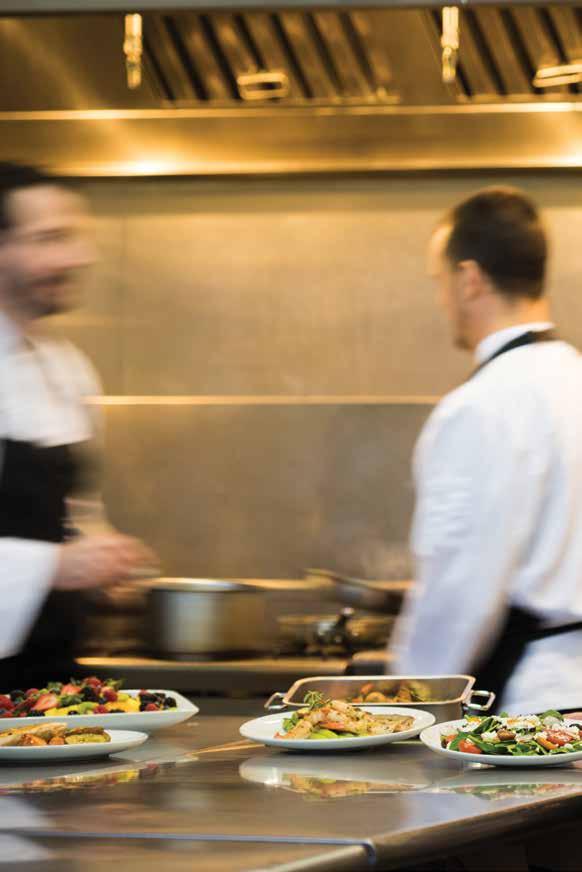
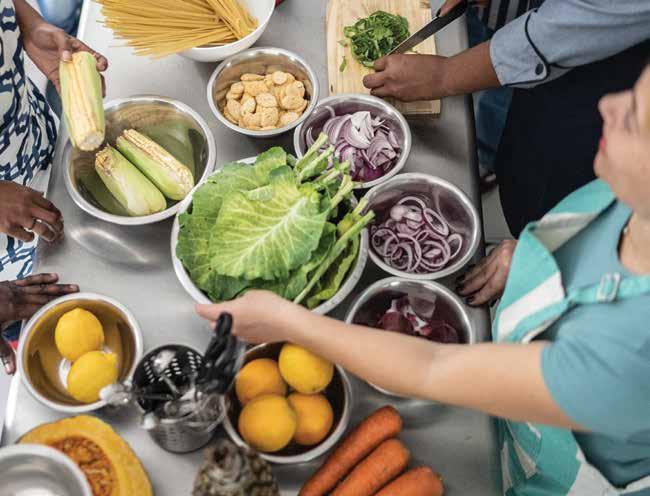
The National Congress 2021 report highlights 56 findings that align with recommendations from the Royal Commission into Aged Care Quality and Safety. The report found that residents will eat more when they can smell what’s being cooked and that many residents would benefit from being more involved in food preparation. Seeborun suggests looking for opportunities to engage residents in the mealtime experience beyond the dining table. Innovative ideas include a chef’s tasting table where residents can try new food options, opportunities
“It’s about enabling residents to be more independent with consuming their meals, noting that it’s also critical to listen to their feedback about what works for them.”
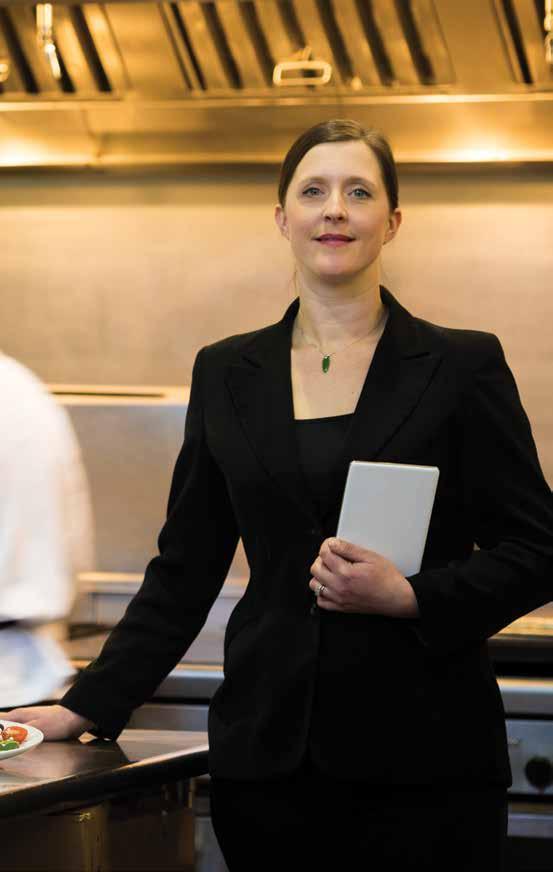
to safely help bake or cook aromatic foods, or simply laying the table or distributing the weekly menu. While texture modification is essential for residents who may have difficulty chewing and swallowing, it’s important that modified food is produced and presented to be tasty and look appetising. “In the old days, modified food was just scooped onto a plate,” says Seeborun. “Now, when using food with modified textures, we use moulds to ensure the food looks delicious and appealing to the senses. We’ve seen this have an impact on residents’ appetites and subsequent weight gain which is such a positive outcome.”
Offering choices, creating a pleasurable dining environment, allowing residents to engage with their meal preparation, and serving food that is appetising and nutritious are all ways in which chefs, cooks and catering staff can imbue mealtimes with dignity and foster meaningful experiences, contributing to residents’ wellbeing.

• Space-Savvy Design: Provides 33% better space utilization compared to traditional round containers.
“Food can be one of the great joys of life,” says Seeborun, “and there are many ways in which care providers can make sure this continues to be the case for those in their care.”
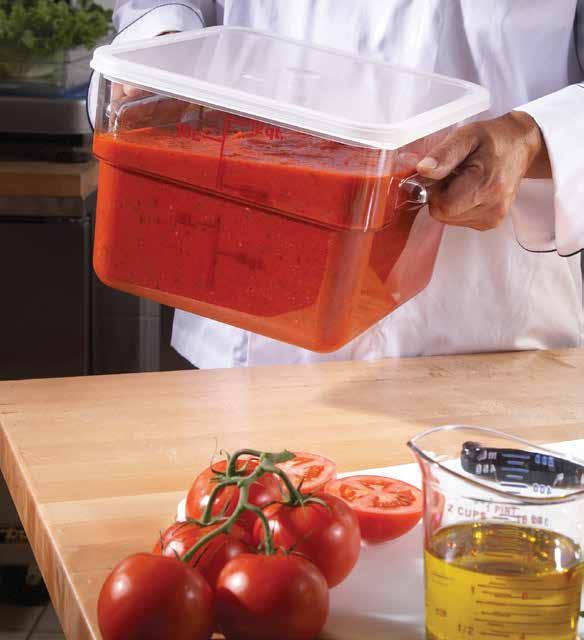


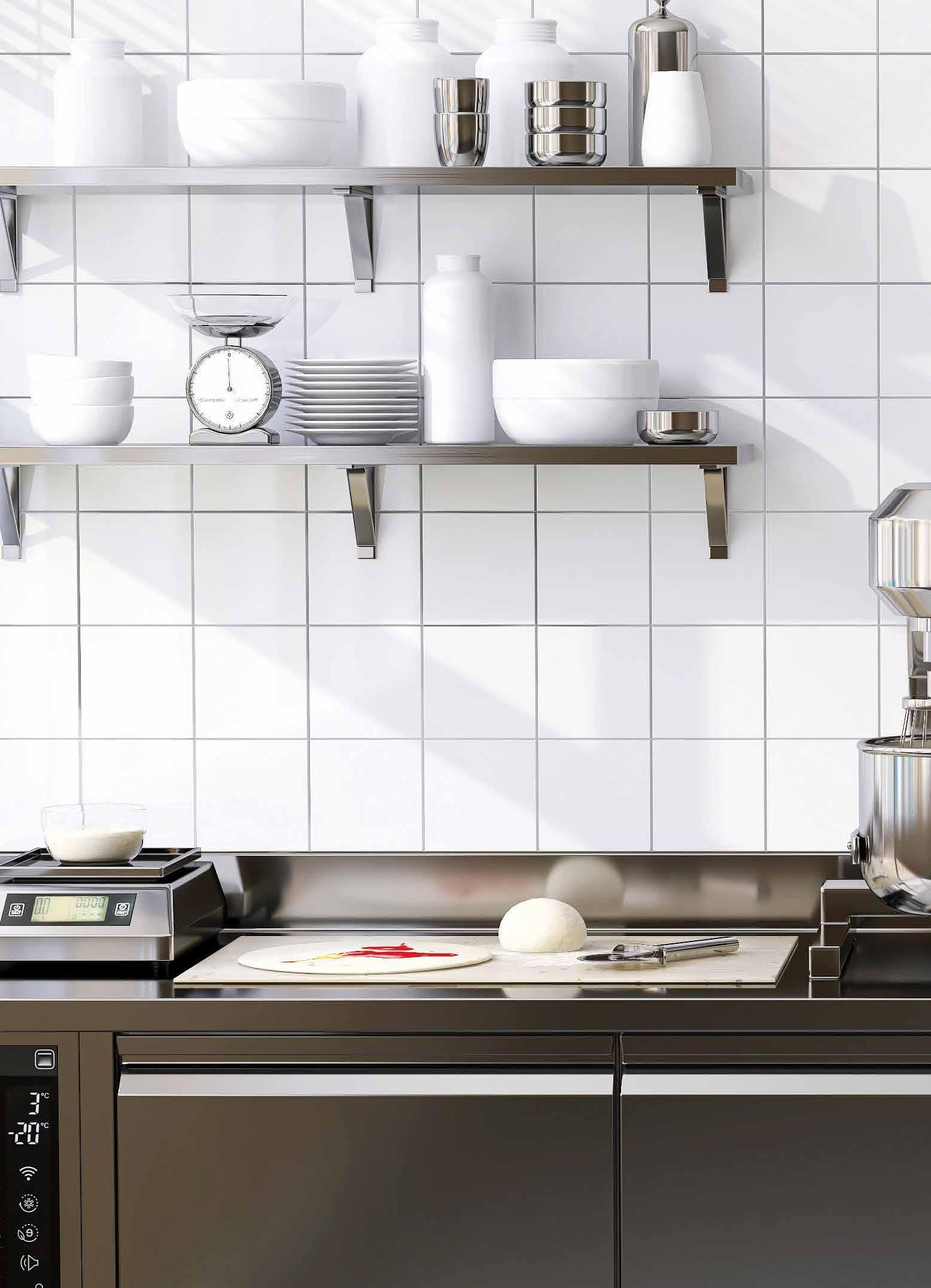
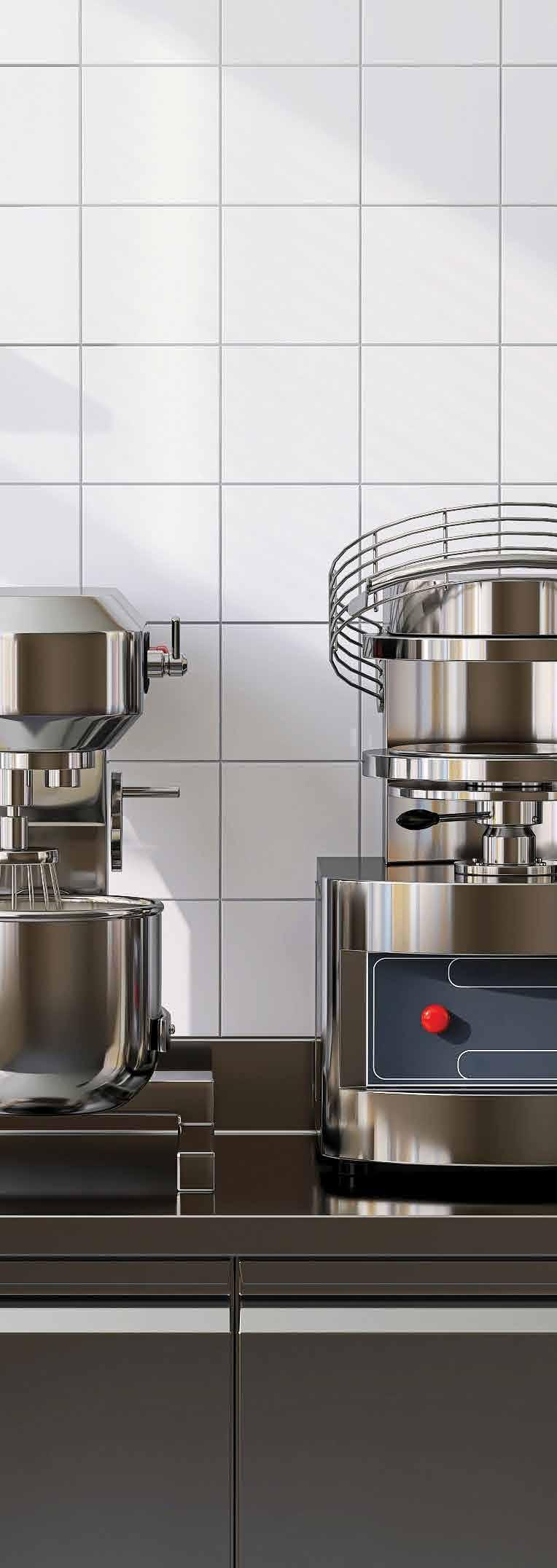
It’s hot, it’s busy, it’s loud. It’s also exciting, creative and your business’s beating heart. Optimising your kitchen – including its layout, ergonomics and sustainable qualities – will help ensure the heart (of the kitchen) beats strongly.
Whether you’re a contract caterer, or work in a hotel, restaurant or healthcare facility and looking to build a new service space or refurbish an existing one, with thoughtful planning you can create a kitchen that is efficient, functional and sustainable.
Bunzl’s National Business Development Manager –Food Service Design and Project Management, Trent Howie works closely with his clients to understand their needs and tailor solutions to their specifications.
“What sets us apart from competitors is our extensive experience in the industry. We bring years of expertise and valuable insights to every project and for every customer. Common challenges our clients face revolve around effective workflow and speed of service. Our team addresses these by designing kitchen layouts that optimise space and workflow for smooth operations and timely service.”
Bigger doesn’t always mean better. Start by taking stock of your business. What kind of restaurant are you running? Consider your menu, the physical space available, the number of chefs and other staff – including how they move around the kitchen – and expected covers per sitting.
You’ll also need to allow space for deliveries, storage for food and other supplies, staff, and customer

“Common challenges our clients face revolve around effective workflow and speed of service. Our team addresses these by designing kitchen layouts that optimise space and workflow.”
washrooms (as needed), offices for managers and any other requirements.
Consider your ‘kitchen flow’, or how workers will move through your space. Look at your staff‘s path, from delivery to storage to preparation, cooking, service and returned dirty dishes.
Remember your expected food volume, and create efficient workstations close to supplies, storage and equipment. Stackable storage containers can make a difference too, as can simple choices such as not placing refrigerators beside stovetops and ovens.
Howie adds that depending on individual client needs, his team has helped customers create service point plans to support electrical, hydraulics and mechanical projects including full support for logistics and installation.
Scan
Catalogue.
The right equipment is essential for efficient service operations. Howie mentions seeing a shift towards allelectric kitchens with equipment such as induction appliances becoming increasingly more popular – as
well as a sharper focus on labour-saving equipment. “Equipment that saves on labour and maintenance such as auto-filtration fryers and polish-free glasswashers have become essential to our clients. By incorporating these into our projects, we can help clients stay ahead of the curve while also improving their operational efficiency,” says Howie.
Recycled and low-carbon-footprint materials, such as bamboo, recycled polyethylene and birchwood, can be an easy option for things like cutlery, crockery, and cups (if applicable). Investing in high-quality equipment can also be a factor in reducing energy consumption as well as mapping out waste management.
It can be challenging to unlock your kitchen space’s full potential. However, consulting experts in the space is an easy way to transform outdated kitchen spaces into efficient culinary hubs, and will ensure seamless coordination of large scale installations.
Contact your Bunzl Commercial Kitchen Project Specialist for more information.


• Outstanding performance and results
• Colour coded system
• Ready to use products
• Practical 750ml spray bottles




























































































Cleanshot Ready-To-Use Range consists of multi-purpose and specialty cleaners for food service, housekeeping and other general areas in your establishment.












SECURE GLOBAL SUPPLY CHAINS BY EMPLOYING AN AGILE AND FLEXIBLE APPROACH TO PRODUCTION PROCESSES AND SOURCING STRATEGIES.
Navigating the challenges created by COVID and geopolitical disruptions in the past few years has required adaptability and innovation from businesses across the globe.
Those that have survived, and even thrived, are businesses that understand the need for a secured supply chain and have implemented measures designed to ensure the continuity, integrity, and security of the entire process from raw material sourcing to product delivery.
It takes a strategic and adaptable approach to navigate an uncertain market, but there are some simple steps a business can take to make sure it’s in control of the moving parts that make up a supply chain.
From developing comprehensive risk management strategies to being flexible about processes and taking an agile approach to procurement, as well as using smart materials to assist with resource forecasting, here are some of the key aspects of a secured supply chain.
Conducting risk assessments to identify vulnerabilities in the supply chain helps any business prepare for various potential disruptions, including delays in delivery time frames and stock shortages. But even the most thorough risk management plan will come unstuck if it is not flexible enough to adapt to changing market conditions and unforeseen disruptions.
Bunzl’s Imports Inventory Manager Louise Pooley says that if you’re not locked into rigid systems and you work proactively with your supply chain partners, you can respond to market conditions successfully.
“For example, acting swiftly to move containers from a transshipment service to a direct service and hence reduce the transit time helps to ensure the availability of goods for customers.”
Being able to predict the demand for various resources needed to fulfil production and operational requirements is critical to any business. This can include raw materials, labour, equipment, facilities, and transportation capacity and when done well, means there are not only adequate resources available to meet demand, efficiency goes up and costs go down.
“For example, having a diversified supply base across products with components or materials that are critical helps to ensure continuity in supply,” says Pooley.
“It’s crucial for businesses to be agile and to try and anticipate impediments. By staying informed and constantly assessing and managing issues enables a more immediate and effective response.”
With advancements in technology now accessible to businesses of all sizes, the integration of smart materials into supply chains offers a significant opportunity to enhance visibility and transparency. This translates to improved monitoring and control of operations, reducing the risk of disruptions and vulnerabilities.
According to Pooley, leveraging data analytics and monitoring tools can enable dynamic adjustments and help ensure security across the supply chain.
“Developments in GPS tracking, RFID (radio frequency identification) tags and blockchain are among the tools facilitating real-time tracking of shipments. These give more surety to the authenticity of products and inventory management for businesses looking to strengthen their supply chain security,” she explains. “Because when things change – they always do – they’re ready to shift gears in a heartbeat, adjusting their security strategies and resources to tackle whatever new threats come their way.”
Contact your Bunzl representative to learn more about Bunzl’s outsourcing and distribution solutions.



When it comes to the tender process for B2B companies, a common misconception is that the only thing that matters before signing on the dotted line is price – but, increasingly, on the back of a turbulent few years for supply chains around the world, several other key elements have risen to prominence.
Raymond Faila, Bunzl’s Business Development Manager – Processor & Industry, highlights how he’s seen the tender process being used to identify new ways to consolidate vendors. “When stock issues were at their peak, vendor lists began to get a lot longer. Now, customers want businesses that can streamline their ordering, while still servicing them in the way they require.”
Kristy Jones, Bunzl ANZ’s General Manager of Sales, has seen a similar trend when it comes to her customers. “Selecting suppliers capable of providing solutions that assist in streamlining your product portfolio can enhance efficiency and prioritise optimal cost-effective options. This approach reduces complexity, ultimately providing a better customer experience by allowing customers to concentrate on their core business activities.”
Another crucial element is the assurance of reliable services – such as having distribution centres in the right locations to support your business. “Customers are looking for suppliers that have size and scale and can service them whenever needed,” says Faila. “This allows an organisation to be mindful of turnaround times, have warehouse stock on-hand, and also the ability to quickly move stock as required.”
In the arena of digital development, researchers predict that 80% of B2B sales interactions between buyers and suppliers will occur in digital channels by
Our SCJ Professional® Proline WAVE 1 litre soap dispenser is made of 70% Recovered Coastal Plastic1 sourced from a global partnership between SC Johnson and conservation organisation Plastic Bank™.
1Recovered

2
Each dispenser is made from the equivalent of 16 x 500ml Recovered Coastal Plastic bottles
Use Together with the Full SCJ Professional® Range of High Quality Foam Soaps
Effective and pleasant to use range of foam soaps which use 30% less product and up to 45% less water when washing and rinsing 2compared with traditional lotion soaps.






“Working with a supplier that understands the value of data can help a business improve its own performance.”
2025; and that 60% of sales organisations will transition from experience and intuition-based selling to datadriven selling. That means working with a supplier that understands the value of data can help a business improve its own performance.
“In today’s data-driven business environment, customers may want to consider suppliers who can provide insights and analytics related to their products or services, which can help optimise operations and decision-making,” explains Faila. “Making sure suppliers are on top of the opportunities data insights can offer is essential.”
As businesses increasingly harness data to drive informed decision-making within their supply chains, it is evident that a company’s Corporate Social Responsibility (CSR) initiatives can also have a huge impact on customers.
Just as data insights inform strategic choices, understanding a supplier’s sustainability practices can be vital for mitigating risks and ensuring ethical and environmentally responsible operations. Additionally, it fosters transparency and accountability within the supply chain, contributing to long-term partnerships built on shared values and mutual trust. “Through the tender process, customers can prioritise suppliers with

a transparent CSR approach. For example, do they have robust sustainability initiatives and goals, such as responsible sourcing, an ethical supply chain, and commitment to eliminating modern slavery practices and respecting human rights?” says Jones.
“Choosing a supplier who understands the value of this approach and strategy is becoming increasingly important as businesses are held accountable, not only for their own actions but also for those of their partners and suppliers,” she adds. The tender process holds immense potential beyond cost considerations. By focusing on factors such as reliability, innovation, and alignment with company values and goals, businesses can elevate their supplier relationships to strategic partnerships.

The growth in plant-based menus and the demand for more vegan and vegetarian dining has allowed some hospitality venues to explore a new market and gain new customers. Some venues are choosing to only offer plant-based choices (and label them as such), while others are adding more vegan-suitable items to their regular offerings.
The reason that people are choosing more plant-based foods is generally thought to be a combination of concern for the environment (plant-
turning to plant-based alternatives as a sustainable solution.
According to Bunzl ANZ’s Catering Sales Manager Guy Churcher, offering vegan and plant-based options can set your establishment apart and showcase responsiveness to changing consumer preferences – setting your establishment up as one that is forward-thinking and adaptable.
“It’s also an opportunity to challenge your diners to embrace an alternative flavour profile and way of eating with thought-out plant-based menu items,” says Churcher.
“Offering vegan and plant-based options can set your establishment apart and showcase responsiveness to changing consumer preferences.”
based recipes generally have a smaller ecological footprint) and for health reasons, with some customers often choosing vegan or vegetarian options when dining outside the home.
Environmental factors, such as floods, droughts, and extreme weather patterns have also caused traditional animal agriculture to face significant challenges. In response, consumers and food producers are increasingly
As much as plant-based and vegan food is common across the dining industry, there’s still a sense of culinary innovation that can attract food enthusiasts who appreciate unique and flavourful plant-based offerings.
For Superwhite’s full range of elegant, commercial quality crockery, scan here.

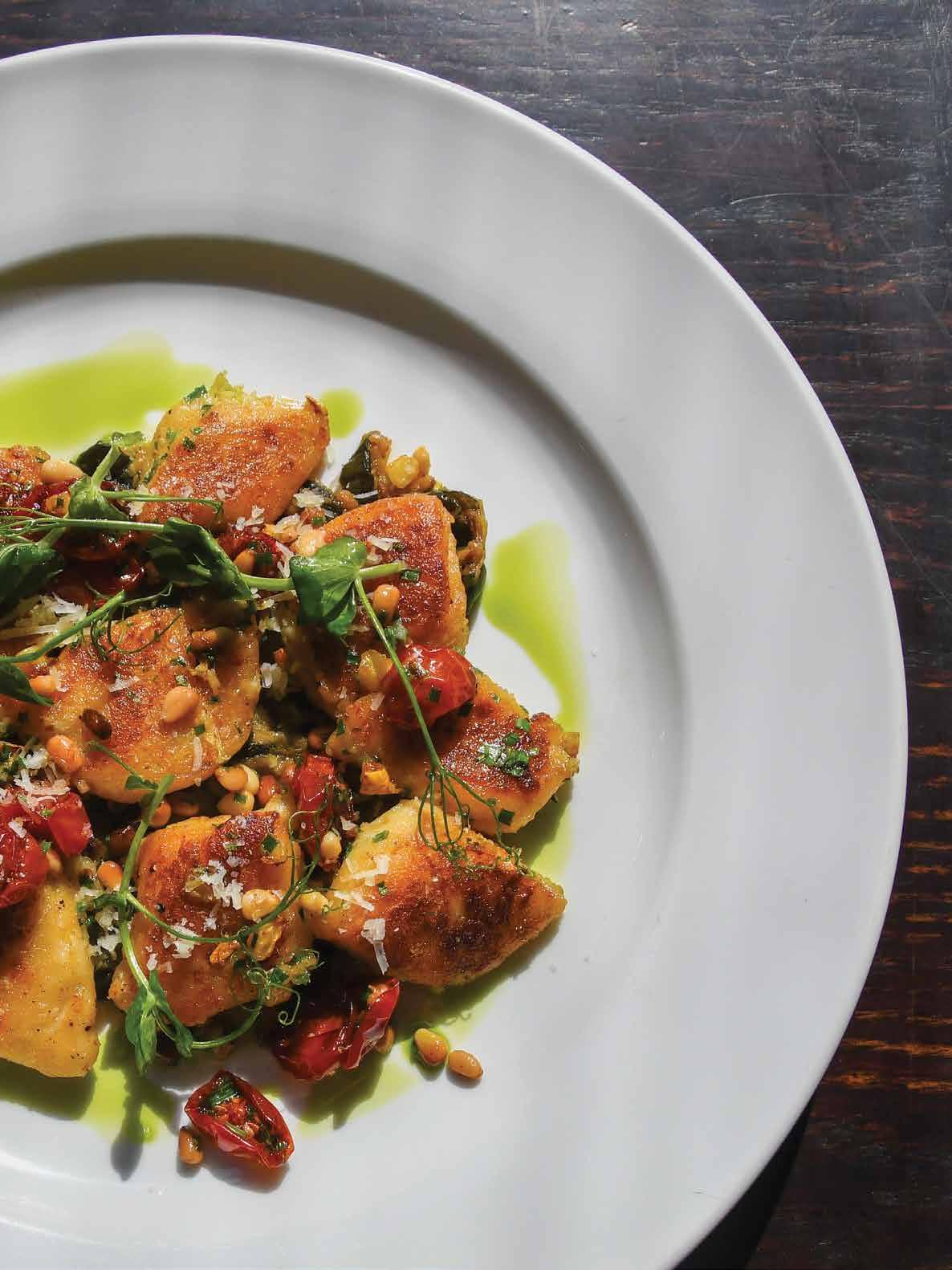

ANIMAL-FRIENDLY SPACES –FROM HOTELS AND OFFICES TO RESTAURANTS – ARE BECOMING MORE POPULAR, BUT HOW DO YOU KEEP EVERYONE SAFE AND HAPPY?
Pet-friendly spaces are growing in popularity as more people embrace the idea of taking their pets out with them. From casual dining spaces to more formal properties like hotels and offices, it’s a trend that continues to increase with no sign of slowing down.
COVID also created a boom in dog and cat ownership, as more people welcomed a pet (or two) into their families during or after lockdown. In New Zealand, nearly two-thirds of households have at least one companion animal, while according to Animal Medicines Australia, pet ownership increased by about 10% during the pandemic,
with almost 70% of households now owning a pet. However, while becoming a pet-friendly establishment can lead to more customers (and increased customer satisfaction), it also requires careful planning to keep spaces comfortable and hygienic for all.
The Australia New Zealand Food Standards Code Standard 3.2.2 states that a food business must not allow live animals (except seafood or other fish or shellfish) in areas where food is handled or served, such as a kitchen or storeroom. This means that clear signage and procedures are required around the site to ensure this is adhered to. The code allows dogs in outdoor dining areas and assistance

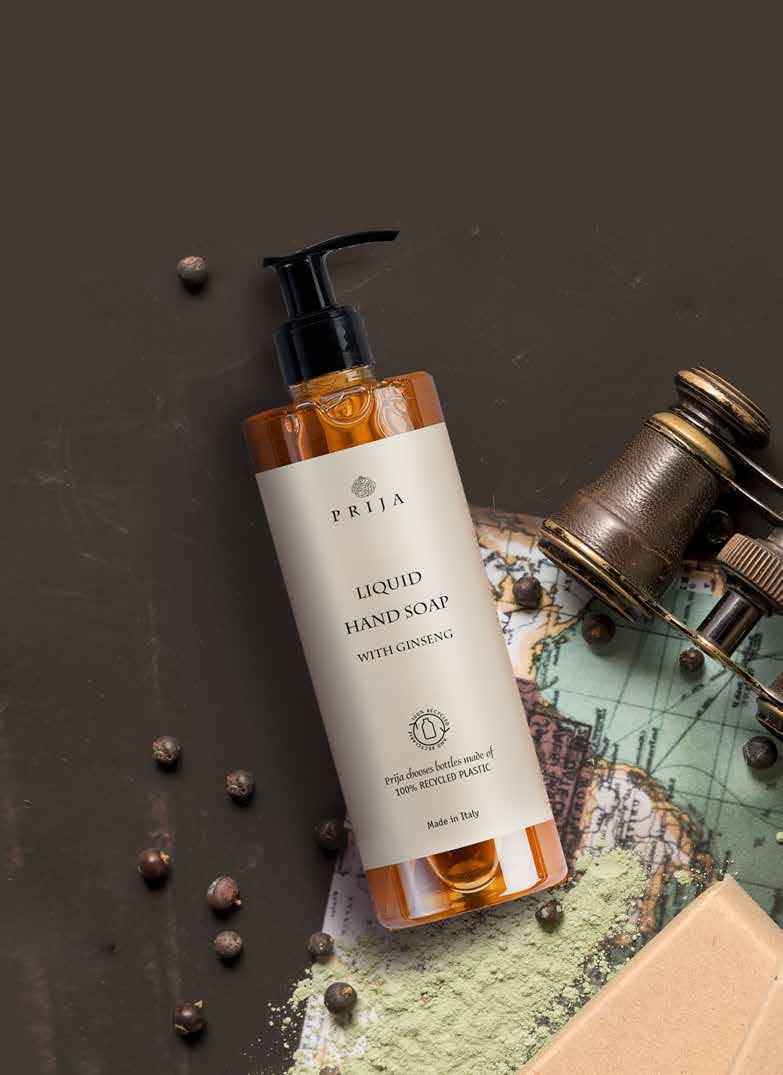


animals, which must be allowed into any areas used by customers.
“We’ve seen a similar trend in hotels across Australia with more and more guests bringing their pets along for their holidays and vacations. This means that housekeeping staff have to be extra vigilant when cleaning rooms to ensure optimum hygiene is maintained,” says Taylah Frew, Key Account Manager – Hospitality at Bunzl. B encouraging pets, first, talk to For Kwikmaster’s range of cleaning and hygiene solutions, scan here.


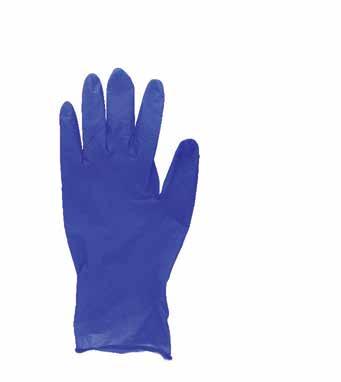







www.bunzl.com.au/katermaster



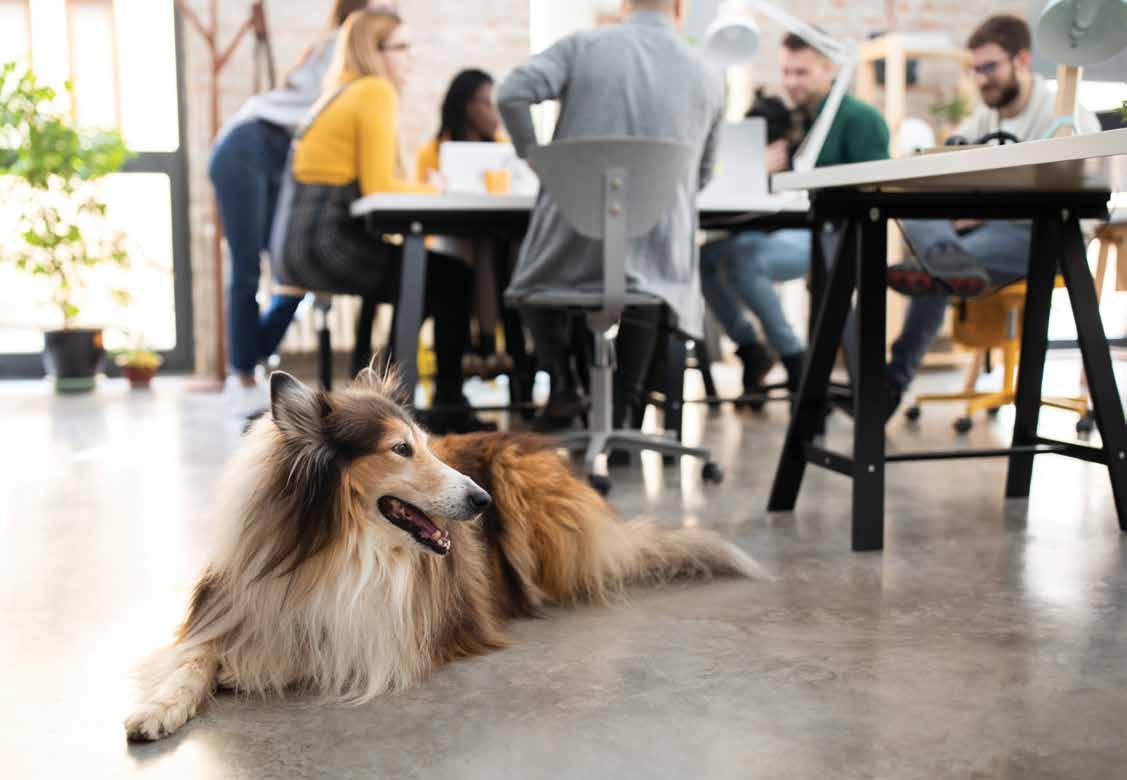
your employees about how comfortable they feel around animals – and how they feel about cleaning up after them. Some people have allergies to dogs and cats and others are fearful. Address procedures for coping with animal-related accidents; with well-trained dogs, accidents are rare, but some dog owners may be inexperienced or negligent. You may need to develop protocols about handling pets and food and encourage more handwashing or additional sanitation practices to prevent cross-contamination.
A crucial step is to assess your establishment’s layout and space availability to determine if it can accommodate pets comfortably and safely, then designate specific pet-friendly areas with appropriate seating arrangements.
the number of pets that can visit, and the type of animals allowed and assess whether you are happy to monitor the species and size of visiting animals.
“A crucial step is to assess your establishment’s layout and space availability.”
Frew adds that extra caution around hygiene is crucial to maintaining the comfort of everyone, “You need to make it easy for pet owners to keep the animal-designated space clean by providing designated waste disposal bins for pet waste, such as poop bags or litter boxes. Regular emptying of these bins is essential to prevent odours and maintain hygiene. You should also consider installing pet waste stations with bags and disposal bins in outdoor areas.”
You may need to also think about the office or establishment furniture within the space; materials that are easy to clean and resistant to stains are ideal. For indoor areas, consider sections with hardwood floors or tiles (rather than carpet – which can trap odours and stains) as ideal petfriendly spaces. Choose furniture with washable covers or materials that can be easily wiped down. It’s important to look after the animals that visit your workplace or venue. You may need to limit
In an office setting, it’s a good idea to establish clear policies and guidelines regarding which types of pets are allowed, their behaviour expectations, vaccination requirements, and any other relevant regulations, and communicate this office-wide. Consult legal experts to understand the legal implications of having pets in the workplace, including liability issues in case of accidents or injuries involving pets.
Dining establishments and offices can create a welcoming and inclusive environment for both pet owners and non-pet owners, enhancing the overall experience for all.

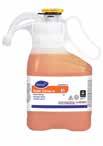

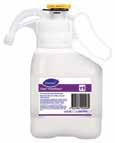
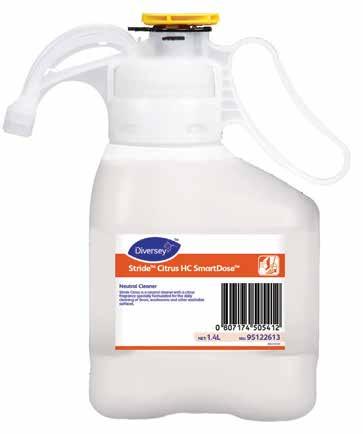





Concentrated general purpose cleaner for cleaning floors, glass and other hard surfaces. Also suitable for carpet spotting and extraction cleaning. Approved for cleaning interiors of commercial aircraft. Formulated with Accelerated Hydrogen Peroxide (AHP).


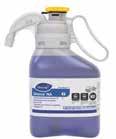




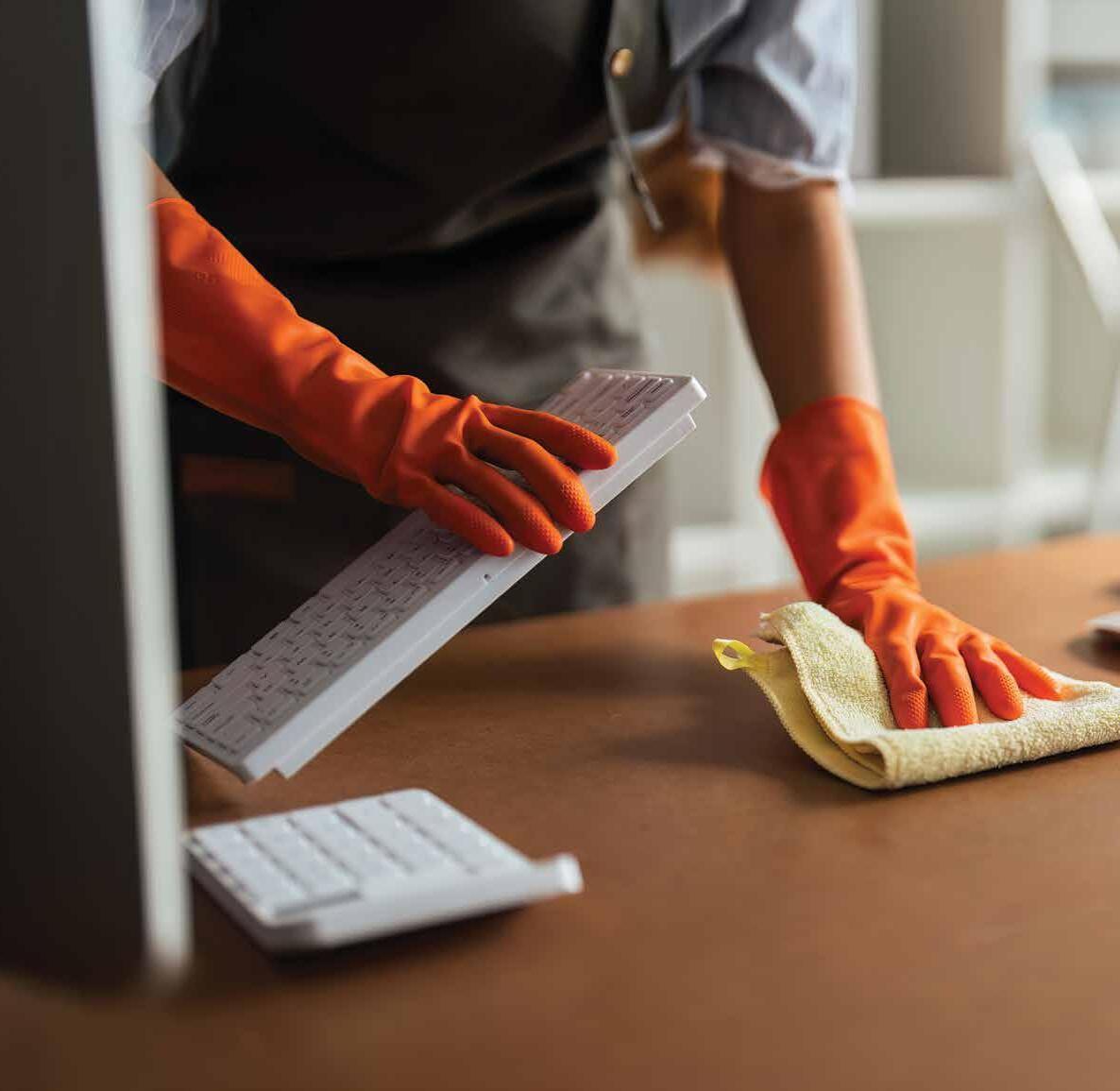
OFFICE CLEANING EVOLVES TO UNIQUELY CATER TO THE HEIGHTENED RISK OF VIRAL INFECTIONS AS WE BRACE OURSELVES FOR THE ONSET OF WINTER.
Winter is coming and with it the increased spread of workplace infections like influenza and COVID.
Viral infections thrive in poorly ventilated indoor environments filled with people working in close proximity as the tiny droplets released by sneezes and coughs land on high-touch surfaces.
The impact on workplaces can be huge. In Australia in 2022, one in ten employees was absent from work on any given day, while in New Zealand in the same year, absenteeism cost the economy NZD $2.86 billion. One of the most powerful ways to combat winter workplace sickness is effective cleaning and disinfecting practices.
Here are three key ways to ensure your workplace stays free from winter viruses and shows your employees you take their wellbeing seriously:
- Identify frequently touched surfaces and make sure they are cleaned multiple times a day – think door handles, handrails, shared telephones and other workplace equipment, washrooms, and kitchenware. Alcohol-based wipes are effective for high-contact areas.
- Thoroughly clean surfaces of grime and grease before using chemical disinfectant to kill germs.
- Place heavy-duty doormats at entrances to trap
WINTER CLEANING PRODUCTS ARE SPECIALLY FORMULATED TO TACKLE THE UNIQUE CHALLENGES OF THE SEASON:
Microfibre Cloths
Made from extremely thin fibres of polyester, polypropylene or polyamide, these fibres are split so that the gaps created can trap dust, dirt and liquids more effectively. They can often be machine washable and reusable to save on waste.
Detergent and Disinfectant Wipes
These wipes will often have active ingredients such as isopropyl alcohol or benzalkonium chloride that are antimicrobial, which means they kill microorganisms (such as bacteria and germs) and stop their growth.
Handwash and Soap
Frequent hand washing is essential to stopping the spread of infection in a workplace so utilising handwash and soap that has been formulated by a combination of surfactants, emollients and moisturises is essential to effective hand hygiene –while still protecting the skin.

snow, dirt, and moisture, preventing them from being tracked further into the office. Regularly clean and replace these mats.
- Encourage staff to practice good hygiene. Washing your hands and cleaning surfaces leads to better hand hygiene, so making that loop work significantly decreases the transmission of germs. Make it easy by ensuring soap and sanitiser (at least 60% alcohol) are always available and accessible. Scan here to discover the
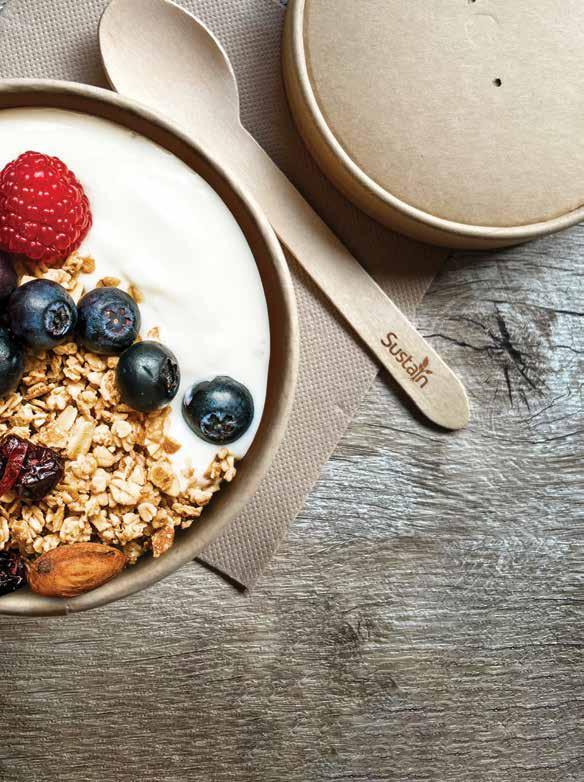
Sustain offers a range of paper and plant-based products that present a sustainable solution for your disposable food service and takeaway requirements.
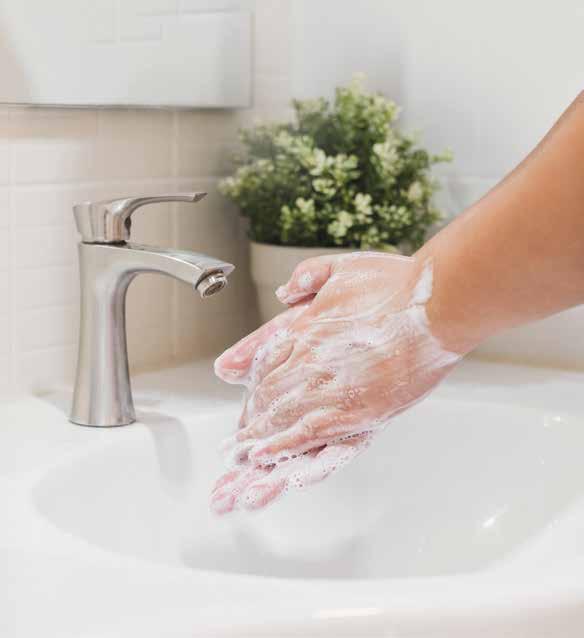






From luxury restaurants to remote mine sites, Bryan Seeborun has catered to diverse audiences over the years. Today, he’s focused on the aged care sector where innovation and dignity work hand in hand.
With a grandfather who worked as a head chef and a mother who worked as a clinical manager in aged care, perhaps it isn’t surprising that Bryan Seeborun, Process and Product Innovator at Regis Aged Care, would eventually find his way to a job that combined both those worlds.
“Back in Mauritius when I was a kid, my grandfather would cook us a four or five-course meal once a month,” he remembers. “I think that’s when I started developing my enthusiasm for food.” Seeborun immigrated to the UK in 1998 and pursued studies in the culinary arts, hospitality, and business management. As a student, he worked in aged care homes on the weekends to make some extra money, an experience that taught him lessons he’s never forgotten. “I worked as a cleaner, a dishwasher, in the laundry, in the kitchens, as a carer – I learned about residential care from every perspective. It ignited my passion for ensuring that everyone, regardless of age or circumstance, has access to nutritious and enjoyable meals.”
Over the years he would work with luxury hotels and restaurants in Europe and enjoy a stint as Executive Chef in the British Navy before moving to Australia in 2013. New to Australia’s vast distances, Seeborun laughs remembering how surprised he was to have to take a plane to get to his new home of Broken Hill where he would work for BHP. “I thought it was going to be a couple of hours’ drive from Melbourne!”

Soccer would be his way into the local community and, as an accomplished player, he was much in demand from the local league. His time in Broken Hill was “a fantastic adventure”
– both an experience of iconic outback Australia and professionally challenging and interesting. “It was in Broken Hill that I began to explore the intersection of catering and community, recognising the vital role food plays in bringing people together, even in the most remote settings.” Later, Seeborun moved to Torquay and worked with the Geelong Cats Stadium (he’s now a devoted Geelong Cats supporter!) and the correctional centre. “These roles challenged
“It was in Broken Hill that I began to explore the intersection of catering and community, recognising the vital role food plays in bringing people together.”
me to think innovatively about catering in diverse environments, from sporting events to institutional settings.”
Seeborun has brought this accumulated experience and insight across myriad catering settings to his position at Regis Aged Care where he’s worked for the last four years. “It’s a privilege to work with Regis to spearhead innovations in dining experiences for older adults.”
One of the key initiatives has been to introduce more personalised dining experiences. “This means we can cater to our residents’ diverse preferences and dietary needs and embrace cultural diversity in our culinary options.”
Seeborun is excited by the innovative role technology is set to play in streamlining the ordering and delivery processes and empowering even residents with cognitive challenges to still make decisions about what they’d like to eat. Ipads with clear pictures of what’s on the menu, for example, will help residents make easy and informed choices and allow them to know what to expect. “The old days of making your lunch order in the morning and not being allowed to change it are over,” says Seeborun. “We don’t want to treat residents in ways that demean them – they are not children. They should have every opportunity to be as autonomous as they wish.”
It’s been a long time since Seeborun’s student days of working weekends in aged care homes and, he’s pleased to say, that the quality of meals on offer since that time has improved hugely. “Everyone deserves to have nutritious and appetising food served in a way that respects their humanity. After all, mealtime isn’t just about sustenance but also about social interaction, sensory stimulation, and emotional wellbeing.”
Effective communication and active listening is key to Jason’s role as National Hospitality Specialist in Healthcare & Facilities Management.

Tell us about your role at Bunzl ANZ.
I partner with customers to deliver cost-effective and custom-tailored solutions to address specific challenges in their business operations. Whether it’s enhancements in labour efficiency, sustainability initiatives, optimising dining experience, ensuring food safety and regulatory compliance – or simply continually improving the food service for patrons – I’m committed to achieving our client’s objectives with expertise and dedication. What do you appreciate the most about your position? Every day I get to solve problems in a sector that I love and engage with products that I’m passionate about. I then get to share these valuable insights with my customers and witness the results of my contribution. Has there been anything particularly surprising about your role? One aspect that continuously surprises me is the large scope of products and specialist knowledge that Bunzl offers. We sell over 100,000 products to customers across diverse sectors –it’s mind blowing. Every week I see new products even in my area of specialisation. What do you think is most important when it comes to your role? Effective communication and active listening. A lot of my role centres around asking the right questions at the right time – which is paramount to offering the best solution. Integrity is also key –I prioritise honesty and transparency, preferring not to offer a product if I believe it may cause challenges in the future. My goal is to secure the best outcomes for my customers, even if it means abstaining from a sale. What are you excited to see more of in the future when it comes to your industry? The rapid advancement of technology, particularly AI and robotics and how they’ll revolutionise meal availability, choice, and delivery, as well as the advantages of nutritional tracking and labour reductions. However, what truly excites me the most is the prospect of witnessing a transformation in aged care dining from a more basic service to an experience that could be found in upscale hotels or cruise ships. A future in aged care where meal choices, food variety, dining experience and lifestyle will be something to really look forward to every day is a great prospect.
With a bright and colourful design, these cups are made with Forest Stewardship Council®-certified (FSC®-C117930) material – offering a sustainable option for your takeaway drinks.
The Solution is in Your Hands.
CODES: SUSCCA08W, SUSCCA12, SUSCCA16, SUSCCA22
SIZES: 8oz Wide, 12oz, 16oz, 22oz

